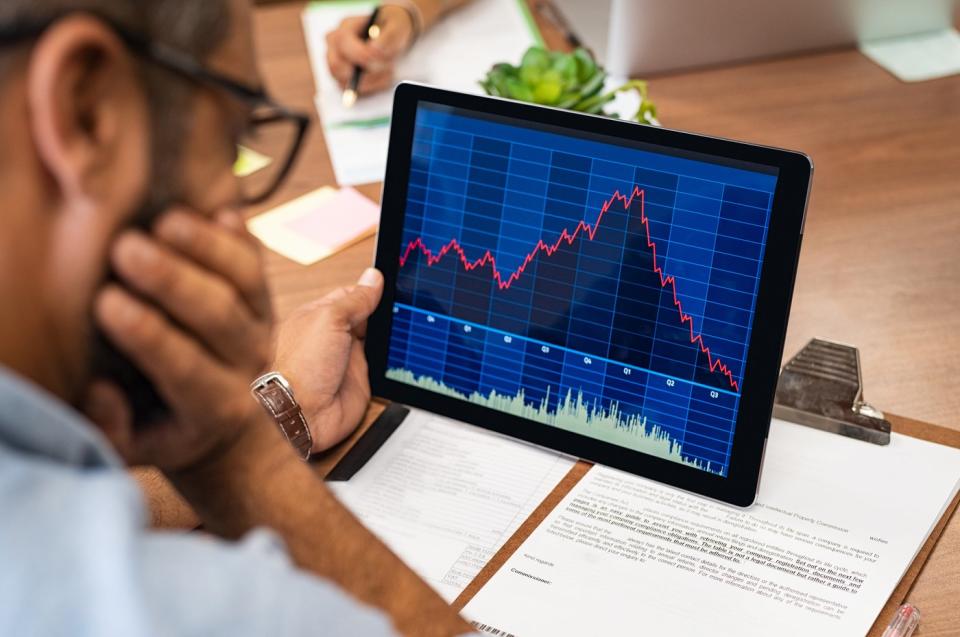Roughly 30 years ago, the proliferation of the internet began changing the growth trajectory for corporate America. Since then, investors have kept a constant eye out for the next big innovation that could rival what the internet did for businesses worldwide in the mid-1990s.
After three decades of waiting, artificial intelligence (AI) has been anointed as the next great leap forward.
With AI, software and systems are given tasks that humans would previously have undertaken or overseen. The jaw-dropping addressable market associated with AI — $15.7 trillion by 2030, according to an estimate from the analysts at PwC — stems from the ability of software and systems to learn without human intervention. This gives AI-driven systems the capacity to evolve over time, in addition to becoming more proficient at their assigned tasks.
Given this mammoth opportunity, it’s no surprise that AI stocks have ascended to the heavens — perhaps none more so than semiconductor goliath Nvidia (NASDAQ: NVDA).

Nvidia has enjoyed a textbook operating ramp
At the beginning of 2023, Nvidia was a $360 billion company. But as of the closing bell on Friday, July 19, 2024, Nvidia was tipping the scales at a valuation of $2.9 trillion. Shortly after completing a historic 10-for-1 stock split in June, Nvidia was briefly the most-valuable publicly traded company and touched a market cap of roughly $3.5 trillion.
The catalyst behind these never-before-seen gains is Nvidia’s hardware in high-compute data centers. In short order, Nvidia’s H100 graphics processing unit (GPU) became the must-have chip for businesses wanting to train large language models (LLMs) and run generative AI solutions. TechInsights estimates that Nvidia accounted for all but 90,000 of the 3.85 million data center GPUs shipped in 2023.
This is a company that’s also benefiting immensely from a lack of AI-GPU supply. Businesses can’t invest in their AI data centers fast enough, which has allowed Nvidia to substantially increase its selling price for the H100. As a result, Nvidia’s adjusted gross margin has expanded by 13.7% in just five quarters (through April 28, 2024).
CEO Jensen Huang aims to maintain his company’s dominance by aggressively reinvesting in innovation. Nvidia’s next-generation GPU platform, known as Blackwell, is set to hit the market by later this year. Blackwell offers accelerated computing in a number of key areas, including generative AI solutions and quantum computing.
The final piece of the puzzle for Nvidia has been its CUDA platform, which is the toolkit developers use to build and train LLMs. CUDA is working hand-in-hand with the company’s desirable hardware to keep customers contained within its ecosystem of products and services.
Is Nvidia going to lose $1.2 trillion in market cap?
Given Nvidia’s virtually flawless operating ramp, it’s not a surprise to find that most Wall Street analysts see abundant upside for this artificial intelligence giant. However, optimism isn’t universal.
Among the more than three dozen Wall Street analysts who’ve placed a price target on shares of Nvidia, none is currently lower than that of D.A. Davidson’s Gil Luria. While the $900 price target ($90 on a split-adjusted basis) Luria placed on Nvidia would have been exceptionally optimistic a year ago, it now points to significant downside.
Considering that Nvidia’s stock peaked at a little over $140 per share following its 10-for-1 stock split, Luria’s $90 split-adjusted price target implies that this AI kingpin is going to shed $1.2 trillion in market cap from peak to supposed trough.
Luria’s low-water price target is based on his skepticism that Nvidia can meet Wall Street’s lofty long-term growth targets. He believes customers won’t spend enough to justify the level of growth analysts are expecting — and I couldn’t agree more.
While Nvidia’s hardware is unquestionably the bee’s knees in high-compute data centers, it’s not free from competition. Advanced Micro Devices and Intel are both rolling out their respective AI-GPUs as direct competitors to the H100. Even if Nvidia’s chips offer accelerated computing advantages, the lack of AI-GPU supply will almost certainly allow AMD and Intel to grab share away from Nvidia.
Furthermore, the world’s most-influential businesses are all seemingly developing AI chips for their data centers. This includes the four members of the “Magnificent Seven,” which happen to be Nvidia’s largest customers by net sales. Companies developing their own AI chips means less data center “real estate” for Nvidia’s hardware to occupy.
This combined external and internal competition is expected to lessen AI-GPU scarcity over time, which is the primary catalyst that’s fueled Nvidia’s GPU pricing power and its substantive increase in adjusted gross margin.

Even Luria may be overly optimistic
If Gil Luria’s price target comes to fruition, Nvidia will have declined by 36% from its all-time, intra-day high. But what if Luria’s price target is still too optimistic?
Over the long run — think 10 or more years from now — artificial intelligence has the opportunity to meaningfully impact most sectors and industries in a positive way. But the outlook for next-big-thing innovations, technologies, and trends is far less enticing over shorter timelines.
For 30 years, there hasn’t been a buzzworthy new innovation, technology, or trend that’s avoided an early stage bubble. Whether it was the internet, business-to-business commerce, genome decoding, China stocks, housing, 3D printing, nanotechnology, cryptocurrency, blockchain, cannabis, or the metaverse, every technology or trend has needed time to mature.
Over the last three decades, the leading company/companies for each of these game-changing trends went on to lose at least half of their value, if not more. Cisco Systems and Amazon shed around 90% of their value during the dot-com bubble, while 3D printing stocks have lost well over 90% of their value in a decade. If history were to rhyme, once again, Nvidia would be expected to lose at least $1.75 trillion in market value, if not more.
The other issue for Nvidia is that a majority of businesses lack a concrete game plan with AI. Although spending on AI hardware has been impressive, there’s no real consensus for how this technology is going to be deployed to help America’s top businesses grow even faster.
Without this blueprint, and with history telling us that investors constantly overestimate the adoption of new technologies, it’s far likelier that Nvidia’s stock blows past Luria’s low-water price target to the downside.
Should you invest $1,000 in Nvidia right now?
Before you buy stock in Nvidia, consider this:
The Motley Fool Stock Advisor analyst team just identified what they believe are the 10 best stocks for investors to buy now… and Nvidia wasn’t one of them. The 10 stocks that made the cut could produce monster returns in the coming years.
Consider when Nvidia made this list on April 15, 2005… if you invested $1,000 at the time of our recommendation, you’d have $751,180!*
Stock Advisor provides investors with an easy-to-follow blueprint for success, including guidance on building a portfolio, regular updates from analysts, and two new stock picks each month. The Stock Advisor service has more than quadrupled the return of S&P 500 since 2002*.
*Stock Advisor returns as of July 22, 2024
John Mackey, former CEO of Whole Foods Market, an Amazon subsidiary, is a member of The Motley Fool’s board of directors. Sean Williams has positions in Amazon and Intel. The Motley Fool has positions in and recommends Advanced Micro Devices, Amazon, Cisco Systems, and Nvidia. The Motley Fool recommends Intel and recommends the following options: long January 2025 $45 calls on Intel and short August 2024 $35 calls on Intel. The Motley Fool has a disclosure policy.
Is Nvidia Going to Lose $1.2 Trillion in Market Value? One Wall Street Analyst Believes So — and This Might Be a Conservative Estimate was originally published by The Motley Fool
EMEA Tribune is not involved in this news article, it is taken from our partners and or from the News Agencies. Copyright and Credit go to the News Agencies, email news@emeatribune.com Follow our WhatsApp verified Channel





